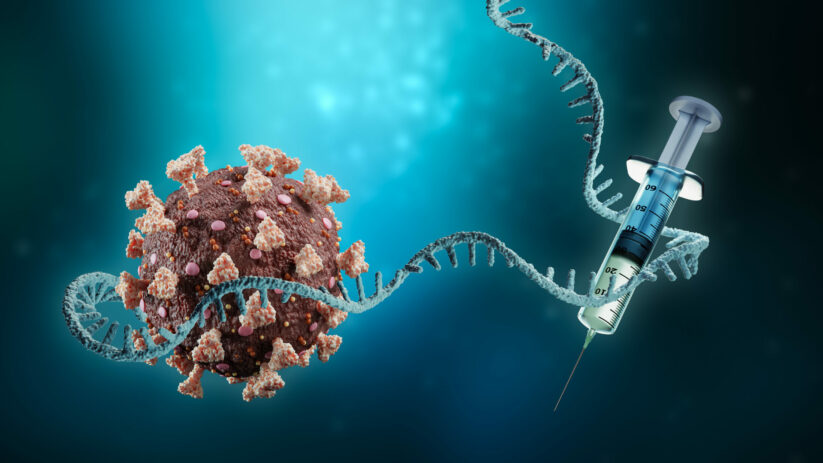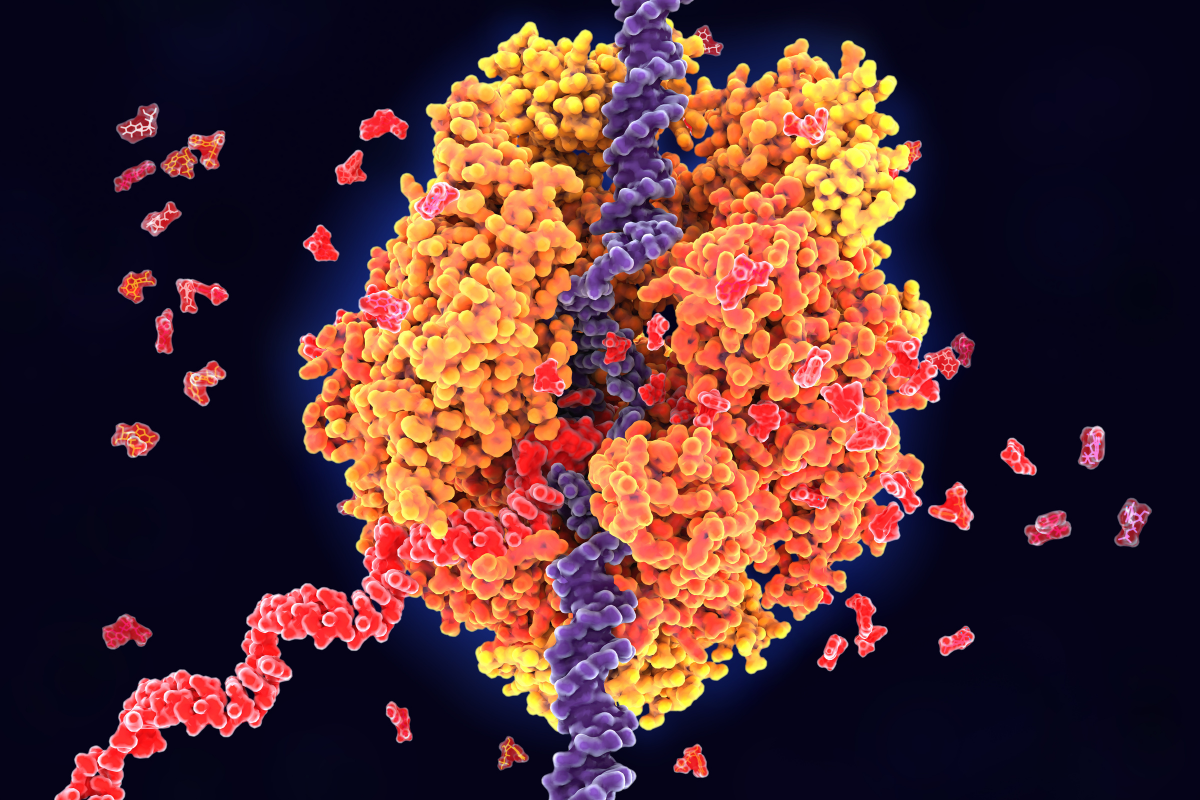Optimising Oligonucleotide Therapies: Efficacy, Targetability, and Precision Medicine

Oligonucleotides are nucleotide-based therapeutics designed to hybridise DNA and RNA sequences. They treat diseases such as cancer, respiratory conditions, and neuromuscular disorders, and work by inhibiting the expression of disease-causing genes. Currently, there are 135 oligo treatments in the pre-clinical stage and the industry is expected to reach 8.2 billion USD by 2024. As scientists gear up for what could be one of the biggest market booms this side of the COVID inoculation roll-out, we look at some challenges and opportunities facing the oligonucleotide industry today.
Oligonucleotide Therapies: What are They? And How do They Work?
There are at least five key classes of oligonucleotide therapies. Antisense Oligonucleotides (ASOs) and siRNA target cellular RNA by Watson-Crick base-pairing. In contrast, CRISPR approaches target genomic DNA by Watson-Crick base-pairing. Therapeutic mRNA are translated to proteins and structured Nucleic Acids can interact with proteins through 3-dimensional shape recognition. So far, these applications have revolutionised the study of gene and protein expression.
Antisense Oligonucleotides: Antisense oligonucleotides or ASOs are single-stranded sequence-specific therapies that target the source of pathogenesis. ASOs bind to their target RNA sequence and depending on the chemical design employed, can cause gene knockdown, modulate mRNA splicing, block translation or promote mRNA editing. ASOs target the RNA before the toxic protein is formed or if the RNA itself is toxic and are potentially more efficient than therapies targeting the toxic protein after it is formed. Unlike small interfering RNA, ASOs can target RNA in the nucleus and the cytoplasm. However effective targeting is not always easy. Chemical modifications are used to increase the metabolic stability of ASOs, as unmodified oligonucleotides are susceptible to degradation by nucleases in biological systems. Targeted delivery is achieved by using ligands that target cell-surface receptors in cells and tissues of interest.
siRNA: Like ASOs, siRNA also bind to their target RNA by Watson-Crick base pairing. However, double stranded siRNA are first loaded into the RISC complex which scans the mRNA space for the cognate match followed by cleavage of the targeted mRNA. SiRNA are also heavily chemically modified to enhance their metabolic stability, potency, and reduce side-effects. In general, targeting strategies that work for ASOs are also applicable for delivery of siRNA. Because siRNA therapies employ a double-stranded approach, they can be more difficult to get into cells than ASOs in the absence of targeting ligands. Nevertheless, fewer molecules in the cell are required for effective therapy.
CRISPR: The Clustered Regularly Interspaced Short Palindromic Repeats (CRISPR) system is a powerful form of gene editing. CRISPRs consist of a mutated intronic region and antisense oligonucleotide to form a mediated correction of mRNA splicing. CRISPR can be used to treat rare and progressive diseases such as Transthyretin amyloidosis (TTR). In particular, biotechnology company Intellia Therapeutics have successfully used lipid nanoparticles containing genetic instructions for CRISPR to target TTR in the liver.
mRNA: Therapeutic mRNA are translated into therapeutic proteins. Like other classes of oligonucleotide therapeutics, mRNA can also be chemically modified to enhance their effectiveness. However, unlike ASOs and siRNA, mRNA must be delivered using nanoparticles that help with cellular entry and endosomal release. Once in the cytoplasm, mRNA are translated to therapeutic proteins. mRNA based vaccines delivered using lipid nanoparticles have proved effective against COVID-19 and are also being tested against other viral infections and cancer.
Nucleic Acid: Nucleic acids such as aptamers and immunomodulatory oligonucleotides interact with proteins via the formation of three-dimensional secondary structures. Nucleic acid-based therapies act as both antagonists and agonists for specific proteins. However, nucleic acid-based drug therapies are not without their challenges. Detection of any exogenous nucleic acids can trigger inflammatory responses. This occurs via interactions with pattern recognition receptors, such as membrane-bound Toll-like receptors or cytosolic RIG-I family receptors.
Challenges in Pre-Clinical Development: Efficacy, Safety, and Delivery
Safety: Oligonucleotide therapeutics are relatively larger, meaning their ability to penetrate cell membranes and hit target sites creates a challenge for effective delivery. In addition to this, they are negatively charged and unable to passively diffuse across phospholipid bilayers that make up cell membranes, particularly the blood-brain barrier. As such, employing different modalities of delivery is paramount to oligonucleotide targeted therapy. Ensuring a truly targeted delivery, however, is not only a question of drug efficacy but also one of safety. Oligonucleotides can have exaggerated pharmacologic effects; if a high dose drug is off-target, this can have serious repercussions for the patient. Side effects include complement activation, Thrombocytopenia, toxicity in the liver and kidney, as well as pro-inflammatory effects.
- Discover the Latest Industry Insights in Oligonucleotide Therapeutics with our Market Report for 2021
- What are the Analytical Challenges of Early-Stage Oligonucleotide Characterisation?
- ?? Listen to an Exclusive Podcast Featuring Biogen to Discover the Challenges Facing Oligonucleotide Synthesis
Efficacy: The rate and intensity of protein binding during uptake is also important. Plasma protein binding refers to the degree to which drugs attach to proteins within the blood. Minimising protein binding can optimise targeted delivery. When proteins bind too tightly, they risk sequestering the oligonucleotide. When proteins bind too loosely, the treatment is flushed out of the body. For Steve Hood, Director of Imagining Expertise Networks at GSK, the solution is a “trade-off, a balance between making sure you keep the product in the body long enough to the hit the target but making sure it's not too heavily bound that it doesn’t actually go anywhere”. Methods for improving the regulation of protein binding are currently in the early stages of development.
Delivery: Haiyan Zhou, Principal Investigator and Associate Professor at University College London claims that “antisense drug delivery, particularly tissue and organ specific delivery, is a crucial” facing the oligonucleotide industry today. The challenge of direct lung targeting is especially prevalent. According to Punit Seth, Vice President at Ionis (now Senior Vice President at Alnylam Pharmaceuticals), “to deliver oligos to the lung via systematic circulation is not straightforward”. While the lungs receive a lot of blood flow, the conveyance of oligonucleotides is tricky. “It has to do with the types of tissue barriers that are present in the lungs versus those in the liver and kidney”, Seth continues. The vasculature in lungs is less porous than in other tissues like the liver and kidney which also have receptors that can bind and clear chemically modified oligonucleotides from circulation. In contrast, aerosol devices allow local delivery of ASOs and siRNA to the lungs and this mode of administration also reduces systemic exposure. This is an example of physically targeting a tissue for delivery of oligonucleotide therapeutics.
RNA Splicing: The Promise of Improved Efficacy
Despite these challenges, all hope is not lost as there are several exciting developments in the pipeline. Optimisation of the RNA splicing technology known as Exon-Skipping used to treat muscular diseases such as Duchenne muscular dystrophy (DMD), has been extremely promising. Research conducted into the intracellular distribution within different cell types found that because Duchenne muscle fibre is leaky, early dosage ensured good penetration. However, when target penetration was lost during later doses after these muscle fibres start healing, scientists were surprised to discover that the decrease in exposure was actually a direct result of improved efficacy. Regarding Exon-Skipping in DMD, UCL’s Haiyan Zhou explains that “whilst this approach will not cure the disease completely, it can slow down disease progression”. In contrast, aerosol devices allow local delivery of ASOs and siRNA to the lungs and this mode of administration also reduces systemic exposure. This is an example of physically targeting a tissue for delivery of oligonucleotide therapeutics.
Precision Medicine: Optimising Patient Experience
Patient experience is becoming an increasingly important part of the oligonucleotide conversation. For Charles Sinclair, Senior Principal Scientist at Bristol-Myers Squibb (now
Senior Director and Head of Translational Sciences at Pioneering Medicines), oncological oligonucleotide delivery especially requires precision attention. Sinclair explained how cancer treatment should revolve around “patient experience”. This is due to the lengthy and rigorous rehabilitation period, where patients must undergo repeat injections and demanding therapeutic regimes. Michael Keller, Senior Principal Scientist at Hoffman La Roche, attested to a similar need to treat both neurological and muscular diseases. Precision medicine paired with advances in delivery will mean “painful oligonucleotide-based injections into the brain and spinal cord on a regular basis will no longer be needed”, Keller explained. Future oligo delivery may give way to not only patient autonomy over rate and frequency of medicinal administration but also important considerations of individual variability in genes, lifestyle, and the needs of the patient.
Oligonucleotide therapeutics is one rapidly expanding market. Though not without challenges, the industry is working hard to optimise and overcome these hurdles. We are entering into a period of trailblazing innovation and discovery. And Moderna and Pfizer certainly set a precedent last year with their pioneering development of the nucleotide-based COVID vaccine. Word has it they are even being tipped to win the next Nobel Prize. At Oxford Global we firmly believe that oligonucleotides will soon become the forerunner of the biologics industry.
Want to find out more about the latest market news and industry insights? Join our Oligonucleotide Chemistry & Therapeutics Symposium on 14th September 2022 and discover the latest in oligonucleotides chemistry, process and analytical development, therapeutics, and antisense therapy.








